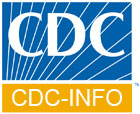Skip directly to the search box, site navigation, or content.
Division of Foodborne, Bacterial and Mycotic Diseases (DFBMD)
Cholera
Clinical Features
Profuse watery diarrhea, vomiting, circulatory collapse and shock. Many infections are milder diarrhea or asymptomatic.
Etiologic Agent
Vibrio cholerae serogroup O1 or O139 that produces cholera toxin.
Reservoir
Brackish and marine waters are a natural environment for the etiologic agents of cholera, Vibrio cholerae O1 or O139. There are no known animal hosts for Vibrio cholerae, however, the bacteria attach themselves easily to the chitin-containing shells of crabs, shrimps, and other shellfish, which can be a source for human infections when eaten raw or undercooked.
Incidence
0-5 cases per year in the United States. A major cause of epidemic diarrhea throughout the developing world. Ongoing global pandemic in Asia, Africa and Latin America for the last four decades.
Sequelae
25-50% of typical cases are fatal if untreated.
Transmission
Contaminated drinking water or food. Large epidemics often related to fecal contamination of water supplies or street vended foods. Occasionally transmitted through eating raw or undercooked shellfish that are naturally contaminated.
Risk Groups
Virtually none in the United States. Risk extremely low (1 per million) even in travelers. Persons living in poverty in the developing world.
Surveillance
All reported cases are laboratory confirmed in state laboratories or at CDC.
Trends
Modest increase in imported cases since 1991 related to ongoing epidemic that began in 1991. Since 1995, over 80% of reported cases have occurred in Africa.
Challenges
Large population migrations into urban centers in developing countries are straining existing water and sanitation infrastructure and increasing disease risk. Epidemics are a marker for poverty and lack of basic sanitation. Multiple routes of transmission mean that successful prevention may require different specific measures in different areas. Natural infection and currently available vaccines offer incomplete protection of relatively short duration; no multivalent vaccines available for O139 infections.
Simple rehydration treatment saves lives, but logistics of delivery in remote areas remains difficult during epidemic periods. Adjunct antibiotic treatment is helpful but may be difficult because of growing antimicrobial resistance. Natural reservoir in warm coastal waters makes eradication very unlikely.
Opportunities
A powerful stimulus to develop needed infrastructure for sanitation and for public health in general, including improvements in sanitation, safer water handling, and public health capacity for surveillance and response to epidemics.
Content Source: National Center for Zoonotic, Vector-Borne, and Enteric Diseases (ZVED)
Program Contents
Contact Information

